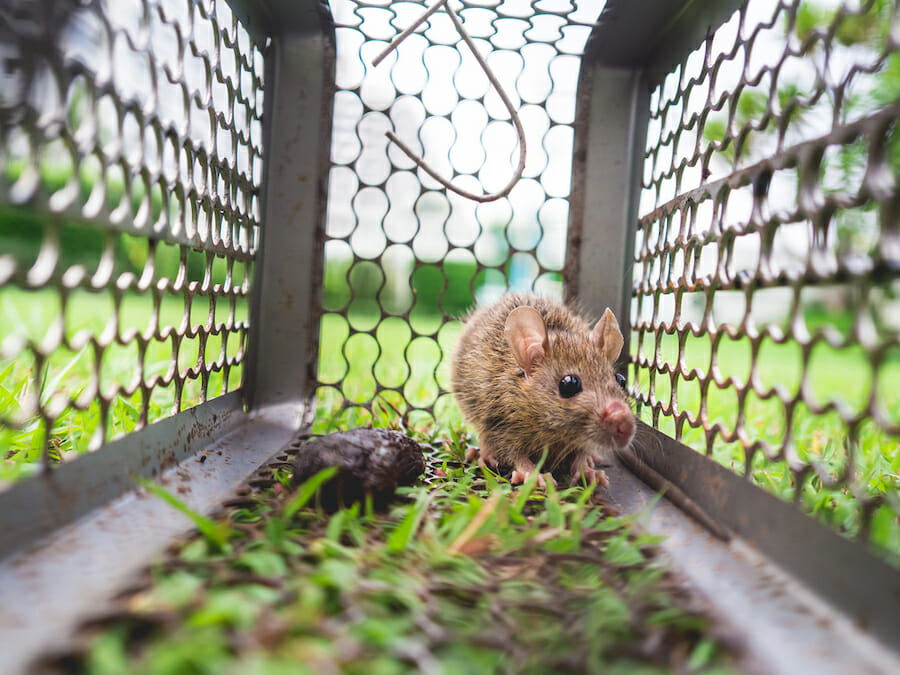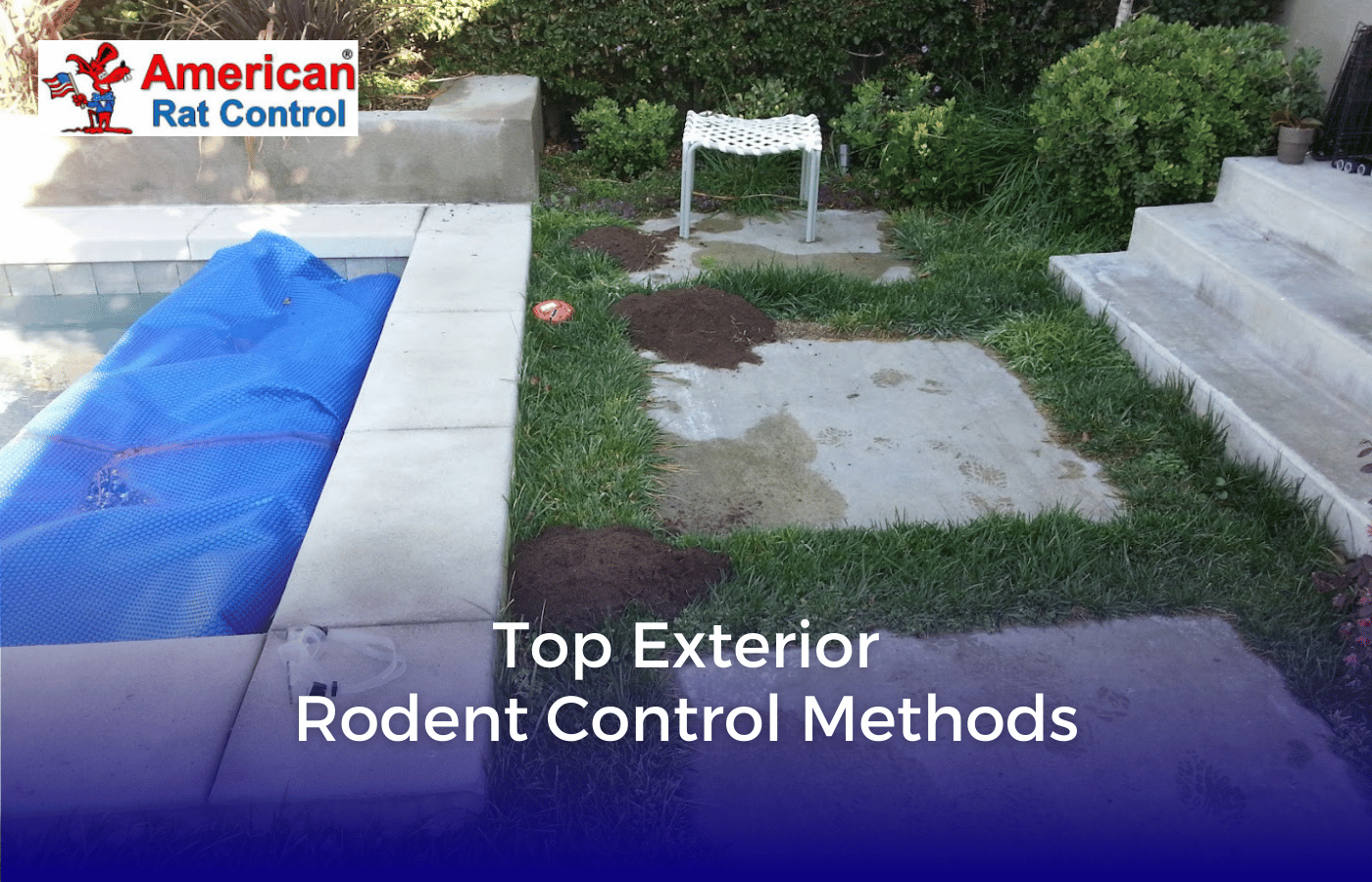Dealing with a rodent issue in or around your house can be incredibly frustrating. Rats and mice not only cause damage by gnawing and nesting, they also spread diseases and contaminate food. By following some suggestions on baiting, trap placement and clean-up, you’ll start seeing results in no time.
Tips for Trapping Indoors for Getting Rid of Mice and Rats in the Home
When it comes to rodent control, rodent traps are often the fastest and most effective solution. Both snap traps and live catch traps can work well depending on your comfort level when dealing with rodents. Below are a few tips for success.
Identify Areas of Activity for Placing Traps for Mice and Rats
Look out for signs like droppings, grease marks along walls, and nesting spots to determine where rats and mice are located. Set traps along walls in high traffic pathways, between nests and in feeding areas. In some cases, rodent trapping can turn into a science.
Choose a Suitable Bait or Reduce a Rodent Population Using Professional Rodent Baiting In Traps for Mice and Rats
Peanut butter is an all-around bait that rodents find irresistible. When it comes to dealing with mice, a pea-sized amount works perfectly. If you’re dealing with rats, use an amount the size of a hazelnut in your traps. Bacon bits and nut butter can also be effective when laying out bait.
Professional exterminators can reduce rodent activity by using many traps with more powerful types of bait such as super blocks. A rodent infestation can be quite destructive as well as pose a public health concern, so you often need to use more than mouse or rat glue traps to ensure success.
Both rodent baiting and trapping in metal-tamper resistant cages is the preferred method of pest control professionals.
Using a cage trap over more modern electronic rat traps makes clean-up easier.
Proper Placements of Traps for Optimum Rodent Control of Mice and Rats
Position traps to the wall with the bait end closest to the wall. This is because rodents tend to move along walls for safety. Place rat traps in the form of metal cages parallel to the wall.
Use Traps in Pairs: Avoid Rat and Mouse Trap Mistakes
To increase your chances of success without needing refills and resets, group traps together. If one trap misses its target, another one might catch the rodent. This approach significantly reduces the response time needed to eliminate rodents.
Checking and Removal for Rodent Control
Check your traps daily. Remove any dead rodents immediately. Reset any traps that have been triggered without catching anything. Wrapping traps with plastic bags can simplify removal and resetting.
It’s also helpful to distinguish what rat traps or mouse trap choices are the most effective. For example, you might wonder what the difference is among snap traps, live traps, and glue traps if you plan to place traps in or around your property for catching mice.
Snap traps are the traps you often think about when it comes to catching mice. Once you kill a mouse, you’ll need to remove and dispose of it and reset and re-bait the trap. A glue trap will capture the pest without the need for re-baiting. A live trap presents a more humane means for catching a mouse, as you won’t kill the mouse but will release it away from your property.
Trapping Rodents Outside When You Have a Mouse and/or Rat Infestation
If you need to eliminate rats and mice that may be nesting in sheds, garages or gardens outside your home. a different strategy is required. Identify where rodents are nesting or seeking shelter. then set traps in those locations. Rats and mice prefer not to venture from their area when searching for food or safety.
Tips for Getting Rid of Rodents Around the Property
Here are some tips, for baiting and trapping rodents around your property:
- Try using their preferred foods as bait, such as hazelnuts, apple slices, meat scraps or peanut butter. Rotating baits in mouse and rat snap traps or metal cage mouse and rat traps can help you determine their preferences.
- Opt for weather traps designed for outdoor and garage use. Look for steel traps or durable plastic traps that can withstand weather conditions.
- Make sure the bait stays securely on the traps by using a tie wire, screws or trap bait boxes. This will prevent it from being removed during windy or rainy conditions.
- Consider placing traps undercover in addition to targeting nest sites. Traps placed under porches, in sheds or beneath debris can increase your chances of success. That’s because rodents tend to seek shelter as they travel and therefore avoid exposed and open areas.
How to Ensure Success Against Rats and Mice: DIY Rodent Control
Persistence is key. After catching rats or mice initially, it’s important to continue with follow-up measures.
Practice Good Follow-Up
Keep the traps actively set for 14 days. This will help ensure that you catch any remaining rodents or any newly weaned young as they emerge from their nests.
Close Off Entry Points
Thoroughly examine both the inside and outside your home to identify how rodents are gaining access. Seal any openings, cracks or holes using materials like steel wool, caulk, foam or other gnaw-resistant substances.
Remove Food Sources
Get rid of any food sources both outdoors and indoors that attract mice and rats. Clean up fallen nuts from your yard and store human and pet food securely inside your home.
Don’t go it alone. Without ongoing rodent control, you can experience further infestation risks. An exterminator understands rodent behavior so they can assist you in realizing a more successful outcome through ongoing pest control.
Also, don’t leave anything to chance. By understanding baiting and trapping measures, you can work with a pest control company to ensure permanent removal.








